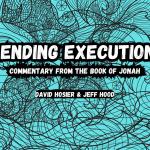Lace up the trainers, zip up your robe. Eye of the tiger, baby. It is Holy Week, so prepare to stress eat and drink way too much coffee. Tell your family that you will see them next Monday. No wait—Monday, you hibernate. You will be down for breakfast on Tuesday. Or at least lunch…happy hour, for sure.
You will need caffeine and adrenaline and the Holy Spirit to power through. And yet… we clergy types often wear fatigue as a badge of honor, rather than staving it off with healthy practices. I accept that we will be tired come Monday. I accept that I will need a nap after multiple Sunday services. But I do not accept that I will be too run down to enjoy the goodness that unfolds throughout this week.
So let’s all take a minute to commit to the discipline of self care and, more importantly, shared leadership. Jesus is the only one that gets to die this week. For the rest of us: game on. Here are some ways to make it to Sunday mimosas.
1. Take a day off. Maybe Monday. Maybe Wednesday? You do you. But do yoga, or go for a run. Play with your kids or your dog. Read a not-church book. Get some sunshine. Eat a real meal. Listen to some great music (Here is your Lent/Holy Week Soundtrack, for inspiration). Watch crap tv. Get your laundry and grocery shopping done. Whatever else you do, take a deep breath and set the steady pulse rate that you hope to maintain til Jesus blows this joint on Sunday.
2. Let the damn bunny come early. If you have small children, how in the world are you supposed to do sunrise service, and then get home to be the Easter bunny, and then get dressed and mainline enough caffeine to be on your A-game for the next service(s)? You can’t. I’ve tried, and it’s a mess. As it turns out, the Easter bunny will visit PK houses on SATURDAY. Who knew?? Then you can go to the church or neighborhood egg hunt, then Sunday is about church. Go figure.
3. Rethink Thursday and Friday. Maundy Thursday and Good Friday services do not have to feature preaching as a central component. These are days for the congregation to gather in the presence of a certain story, and there are many ways to interpret and present that story. For instance, think about Maundy Thursday as a choir cantata, or short drama. (bonus: if the choir sings, you have the added bonus of a captive audience—you are guaranteed that at least those 12 to 25 people will show up, possibly with their families!). At my church we do a simple meal with guided discussion, music, and communion. Our Good Friday is a series of poetic reflections on the 7 last words, with music in between. This service is entirely lay-led.
The coolest Good Friday service I’ve ever seen was at my last church—we had “7 Last Words on the Labyrinth,” which involved lots of people but very little planning or preparation. It was interactive; it was dark and windy and amazing, out in the desert. I can’t do the same thing with the space I’ve got now, but dang. It was cool. The point is, think of ways to make your setting work for you, and let the people tell the story.
4. The Easter Only Crowd. Well. This is the heart of it, right? The real strain of Easter is knowing that your place will be full of people who are new, or who only come once a year. Translation: THIS HAD BETTER BE GOOD. Maybe if we say exactly the right thing, they would come back next week. And the next and the next and the next. Enter: Misguided performance anxiety. Add to this the semantics of preparing your place for a crowd way beyond its usual capacity—and you’ve got everything from parking problems to fire hazards to PEOPLE SLIPPING BY THE GREETERS WITHOUT SIGNING IN AND LEAVING THEIR CONTACT INFORMATION. It’s this last one that has you waking in the middle of the night in a blind panic, right? Anyway. Easter feels like higher stakes than the rest of the year combined.
Tell your people it is all hands on deck. Schedule extra greeters, put some people in the parking lot to direct traffic, print extra bulletins and hope that there’s a loaves and fishes thing going on with the coffee and donuts. Then it is out of your hands. We want folks to have a good experience, but we cannot possibly control all variables. Spoiler alert, JESUS IS NOT IN THE TOMB. The Spirit moves when the sanctuary is in overflow-mode, and people cannot help but get caught up in the joy of it. The preacher is the facilitator of this good news—not the author of it.

5. Plan time off. Clear the calendar of all meetings next week, and tap someone else to preach next Sunday. The rest of your post-Easter mess will still be there a full week later.
6. Make Sunday brunch reservations. Or at the very least, do not volunteer to host a family gathering at YOUR HOUSE following services.
7. Go to the liquor store. Seriously, like now. Especially if you live in a damn blue light state. Otherwise, you will roll up in there on Sunday afternoon for your post-nap bourbon or 6-pack, only to find that, oh wait, Kansas doesn’t sell alcohol on Easter. Because Jesus, I guess. Ever since I learned this the hard way, my church folks have kindly reminded me every year to go stock up early.
8. Make a list of things you wish you’d thought of earlier. For next year. Ask someone else to be the keeper of this list, and remind you to look at it a full 4 to 6 weeks ahead of next Easter.
9. Let the church be the church. It bears repeating: the gathered community IS the Easter moment. The job of the pastor is to hold all these moving parts and pieces—and that is heavy work—but when it comes right down to it, trusting folks to show up and be who they are and use the gifts God gave them is the most faithful, life-giving, joy-filled thing we can do. Let the church be the church. It is really the answer to everything. Which leaves us only to face:
10. The liturgical roller coaster. It is Thursday night. You have just handed Jesus over to the authorities, and you know that tomorrow, shit is gonna go DOWN. You will go down into the depths with your people—into the certainty of death and human suffering; into the mess of our everyday lives and relationships, into the horror of local and global violence, into the shame of poverty… there is nothing to do but slog through it. And MEANWHILE, you are supposed to be working on an Easter sermon. (Which, of course, needs to be the best sermon that anyone has ever preached, ever). From the darkest day in human history to the day humanity glimpsed heaven on earth—the work of holding all these parts of the story at the same time is pure emotional labor. No help for it.
But, that is why we’re here. This is what we signed up for, to bear witness to this truth: deepest despair and unbound joy coexist alongside each other, every day of creation. In our people’s lives, in our communities, in the world. It is all clanging around us, every moment, and we are here to sit with the suffering while drawing out the hope. This is the work we do every day, but the work of this week holds it all up in sharp relief. And it just get us in the gut sometimes.
There is no help for the roller coaster. We can only ride it with our folks, and tell the stories that move us from one peak to another. Knowing that this is the heart of our sacred calling, we can let go of the other details go (see #’s 1 thru 9) and be along for the ride.
Take care of yourselves, pastors and preachers and worship leaders; and musicians; and the people who hide eggs and make the coffee and hand out the bulletins. Because listen: the only thing that should be empty come Sunday, is the tomb. (And maybe the center of the chocolate bunny. Which we will eat for breakfast, between sunrise service and all that comes after.)
















